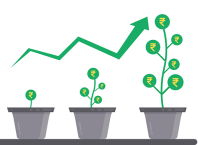Bond trading involves buying and selling bonds on the secondary market. The prices of bonds are determined by the demand and supply in the market, which is influenced by various factors such as economic indicators, political events and interest rates.
Several types of bonds can be traded in Australia, including government, corporate, and international. When constructing a bond portfolio, it is essential to consider the type of bond, the term to maturity, the risk profile and the yield.
Contents [show]
Determine your investment objective
The first step in constructing a bond portfolio is determining your investment objective. It will involve determining what you want to achieve from your investment and how much risk you are willing to take. For example, are you looking for income or capital growth? Are you investing for the short-term or long-term?
Consider the type of bond
Traders can trade three main types of bonds in Australia: government, corporate, and international.
Government bonds are issued by Australian state and federal governments and are considered relatively low-risk investments. Corporate bonds are issued by companies and are classified as either investment grade or high yield. Investment grade corporate bonds are considered lower risk, while high yield corporate bonds are considered higher risk. Foreign governments issue international bonds and companies and can be traded in Australian dollars or foreign currencies.
Consider the term to maturity
The term to maturity is the length of time until the bond expires. Bonds with longer terms to maturity typically offer higher yields but are more sensitive to interest rate changes. When choosing the term to maturity of your bonds, it is essential to consider your investment timeframe.
Consider the risk profile
Bonds can be classified as either low-risk or high-risk. Low-risk bonds include government bonds and investment-grade corporate bonds. These types of bonds offer lower yields but are less volatile and provide excellent stability for your portfolio. High-risk bonds include high-yield corporate bonds and international bonds. These types of bonds offer higher yields but are more volatile and offer less stability for your portfolio.
Consider the yield
The yield is the return you earn from investing in a bond. Considering the yield when constructing a bond portfolio is crucial as it will impact your overall returns. Higher-yielding bonds typically provide higher returns but are also riskier. When choosing the bonds for your portfolio, it is vital to strike a balance between risk and return.
Choose the right broker
When choosing a broker for trading bonds, it is crucial to consider the fees, platform and customer service. Online brokers such as CMC Markets offer competitive rates and a wide range of features. Comparing different brokers before deciding which is right for you is essential.
Start trading
Once you have chosen a broker, you can start trading bonds. You will need to open an account and deposit funds to do this. Once your account is funded, you can begin trading.
Benefits of trading bonds
Here is a look at some benefits of trading bonds.
1You can generate income
One of the main benefits of trading bonds is generating income. The income is generated from the interest payments made by the issuer of the bond. These interest payments are usually paid semi-annually.
2You can hedge against inflation
Another benefit of trading bonds is that you can hedge against inflation because bonds offer a fixed rate of return, meaning that your investment will be worth more in real terms if inflation increases.
3You can diversify your portfolio
The third benefit of trading bonds is diversifying your portfolio because bonds offer a low correlation with other asset classes such as stocks and property. By incorporating bonds in your portfolio, you can reduce the overall risk of your investment.
4You can access a wide range of bonds
The fourth benefit of trading bonds is that you can access a wide range of bonds because bonds are traded on several exchanges, including the ASX, NZX and LSE.
5You can trade bonds online
The fifth benefit of trading bonds is that you can trade them online, which is convenient and efficient as you can do it from the comfort of your home. Online brokers such as CMC Markets offer competitive rates and allow you to trade various bond types.












